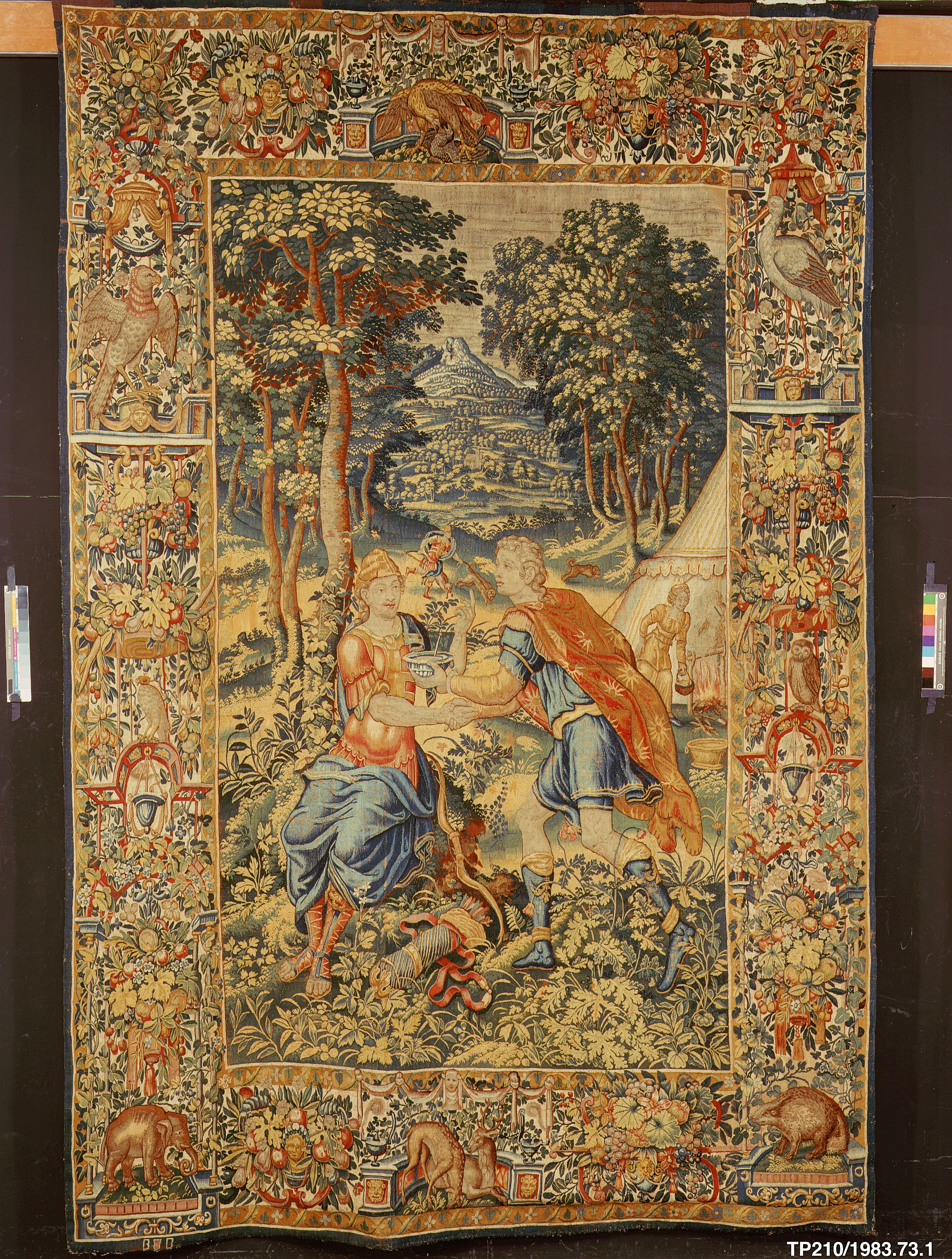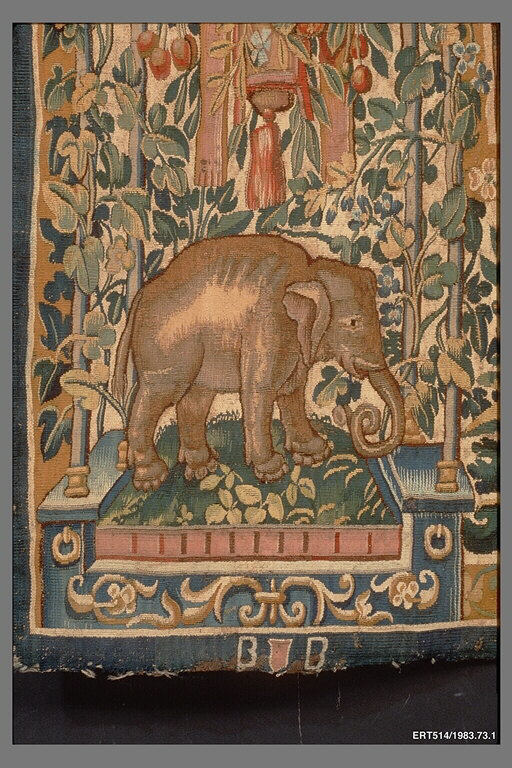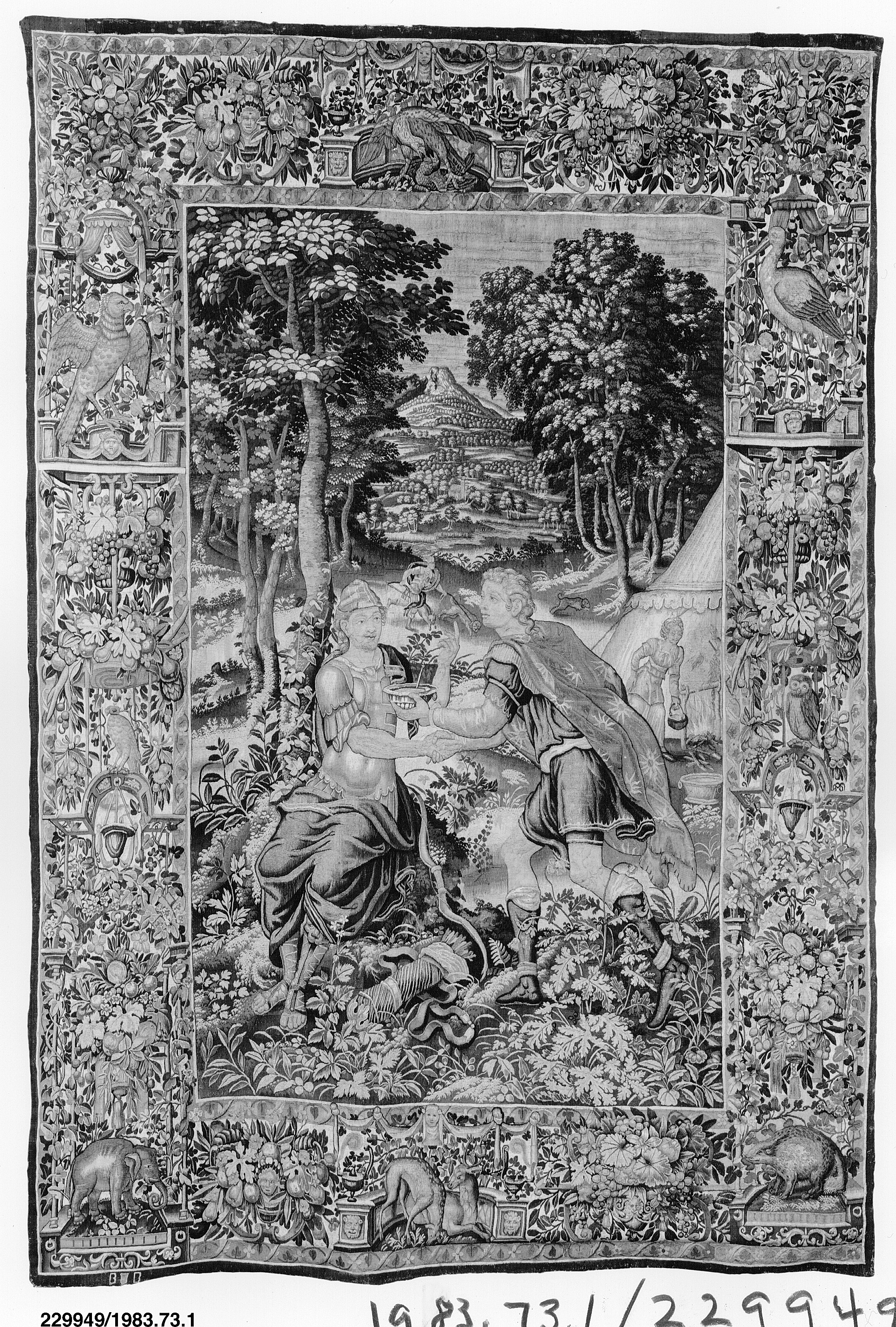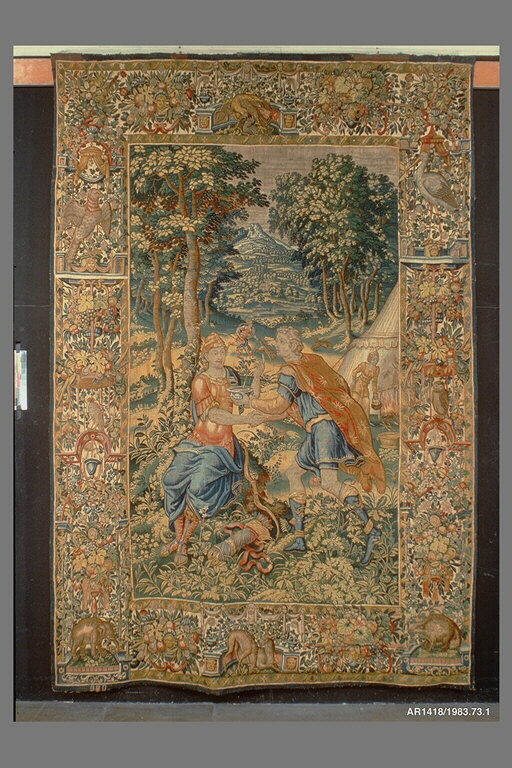Esau Selling His Birthright to Jacob from The Story of Jacob series
Not on view
The story of Jacob as depicted in this set of six tapestries (1983.73.1–.6) begins with the scene of Esau selling his birthright to Jacob (Gen. 25:29–34). Esau, the hunter, sits with his bow and quiver at his feet. He clasps hands with Jacob, his brother, who is clad in the starred robe that will identify him throughout the story. By this handshake Esau and Jacob seal their agreement, and the former accepts a bowl of food in exchange for his birthright as firstborn. The secondary scenes represent different moments in time and serve to advance the story. In the center distance Esau is shown hunting with two dogs. To the right, Rebecca, mother of Esau and Jacob, is seen cooking outside the tent, probably preparing food for Jacob to present o his father, Isaac (Gen. 27).
The narrative continues to unfold in the other tapestries, which depict Rachel giving her servant Bilhah to Jacob (Gen. 30:1–4), Rachel and Bilhah with her son Dan, and Jacob making a covenant with his father-in-law, Laban (Gen. 31:43–53), a scene combined with Laban looking for the images (Gen. 31:33–35) and his farewell to his daughters and grandchildren (Gen. 32:1). Jacob’s sacrifice after this covenant is shown in the fifth tapestry (Gen. 31:54), while the sixth illustrates Jacob both burying idols under an oak tree (Gen. 35:4) and building an altar in Bethel (Gen. 35:6–7).
Although this set may be complete, it is unlikely, since certain frequently illustrated scenes, such as Isaac blessing Jacob and Jacob’s dream, are not included. Moreover, as this set is woven from designs made earlier, there may have once been additional cartoons. Indeed, three related tapestries, with some central scenes similar to our set, but with different borders, are in the Residenz Museum in Munich. These tapestries all bear the Brussels city mark and that of the weaver Jan van Tiegen. The first depicts events immediately following the selling of the birthright: Esau with the ailing Isaac discovers his father has blessed his brother (Gen. 27:30–41) and Jacob being sent to find a wife (Gen. 28:2–5). The second tapestry depicts Jacob at the well of Haran (Gen. 29:2–14); the third combines both the scenes of Jacob’s covenant with Laban and of his subsequent sacrifice. In the Museum’s set these latter two scenes appear in separate hanging and the figures bringing stones for the sacrificial altar appear twice: to the right of the scene of the covenant and to the left of the scene of the sacrifice. This indicates that the original cartoon was divided to provide patterns for hangings of narrower widths.
On stylistic grounds, the tapestries can be dated to the third quarter of the sixteenth century. The double "B" and shield, which appear in the guard stripe of five of the tapestries, identify Brussels as the city of manufacture. However, neither the designer nor the weaver is known, although there are clues to identify the latter. Four of the tapestries do bear a weaver’s mark: a merged "C" and "T" with three stars to the right. This mark, which is also found on tapestries in Boston, Berlin, and Cologne, was formerly thought to indicate the Brussels weaver Corneille Tseraets, but it has been proven that he used a different mark. Yet another unidentified weaver’s mark appears in the upper right guard of the tapestry depicting Jacob burying idols; however, this mark has been set into the tapestry and is not integral to it.
Perhaps the most pleasing aspect of these tapestries, which have retained their bright colors and are in good condition, are the wide, well-designed borders that frame five of the hangings. Fruits, flowers, and architectural elements are combined with animals and birds, native and exotic, to produce entertaining and lively surrounds. A veritable menagerie encircles the scene of Esau selling his birthright. In the left border an eagle, a hooded falcon, a hawk, and an elephant are depicted; at center bottom, a stag and a doe. The right border houses a stork, an owl, a mammal that may be a beaver, while at center top one bird attacks another. The naturalistic details are not restricted to the border motifs. The settings of the central scenes contain a variety of flora, and in many cases specific trees and plants can be identified.
Although there are several exceptional sixteenth-century Brussels tapestries in the Museum’s collection, this bequest represents the first substantial set of hangings from this period and place of manufacture.
Due to rights restrictions, this image cannot be enlarged, viewed at full screen, or downloaded.
This artwork is meant to be viewed from right to left. Scroll left to view more.






